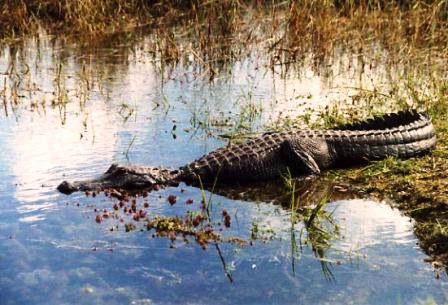Floridian Nature spot of the week: The Everglades
Everglades National Park, the largest subtropical wilderness in the United States,
boasts rare and endangered species. The largest body of water within the
park is Florida Bay, which extends from the mangrove swamps of the
mainland's southern tip to the Florida Keys. Over 800 square miles of
marine ecosystem lies in this range. Coral, sponges, and seagrasses
serve as shelter and food for crustaceans and mollusks, which in turn
are the primary food source for larger marine animals.
Sharks, stingrays, and barracudas also live in
this ecosystem, as do larger species of fish that attract sport fishing.
Pelicans,
shorebirds, terns, and
black skimmers are among the birds frequenting park
shorelines. Everglades National Park contains the southern 25 percent of
the original
Everglades marshland region of southwestern Florida. The park
visited by one million people each year and has been declared an
International Biosphere Reserve, a World Heritage Site, and a Wetland of
International Importance, only one of three locations in the world to
appear on all three lists. The Everglades is a slow-moving system of
rivers, flowing southwest at about .25 miles per day, fed by the
Kissimmee River and Lake Okeechobee.
Unlike most other U.S. national parks, Everglades National Park was
created to protect a fragile ecosystem instead of safeguarding a
geographic feature. Floridians hoping to preserve at least part of the
Everglades first proposed that the area become a national park in 1923.
Five years later, the Florida state legislature established the Tropical
Everglades National Park Commission to study the formation of a
protected area. Thirty-six species designated as threatened or protected
live in the park, including the
Florida panther, the
American crocodile, and the
West Indian manatee. Protecting the largest U.S. wilderness area
east of the Mississippi River, the park is the most significant breeding
ground for tropical wading birds in North America, and contains the
largest
mangrove ecosystem in the
western hemisphere. More than 350 species of birds, 300 species of fresh
and saltwater fish, 40 species of mammals, and 50 species of reptiles
live within Everglades National Park. All of southern Florida's fresh
water is recharged by the park, including that of the Biscayne Aquifer.



Comments
Post a Comment